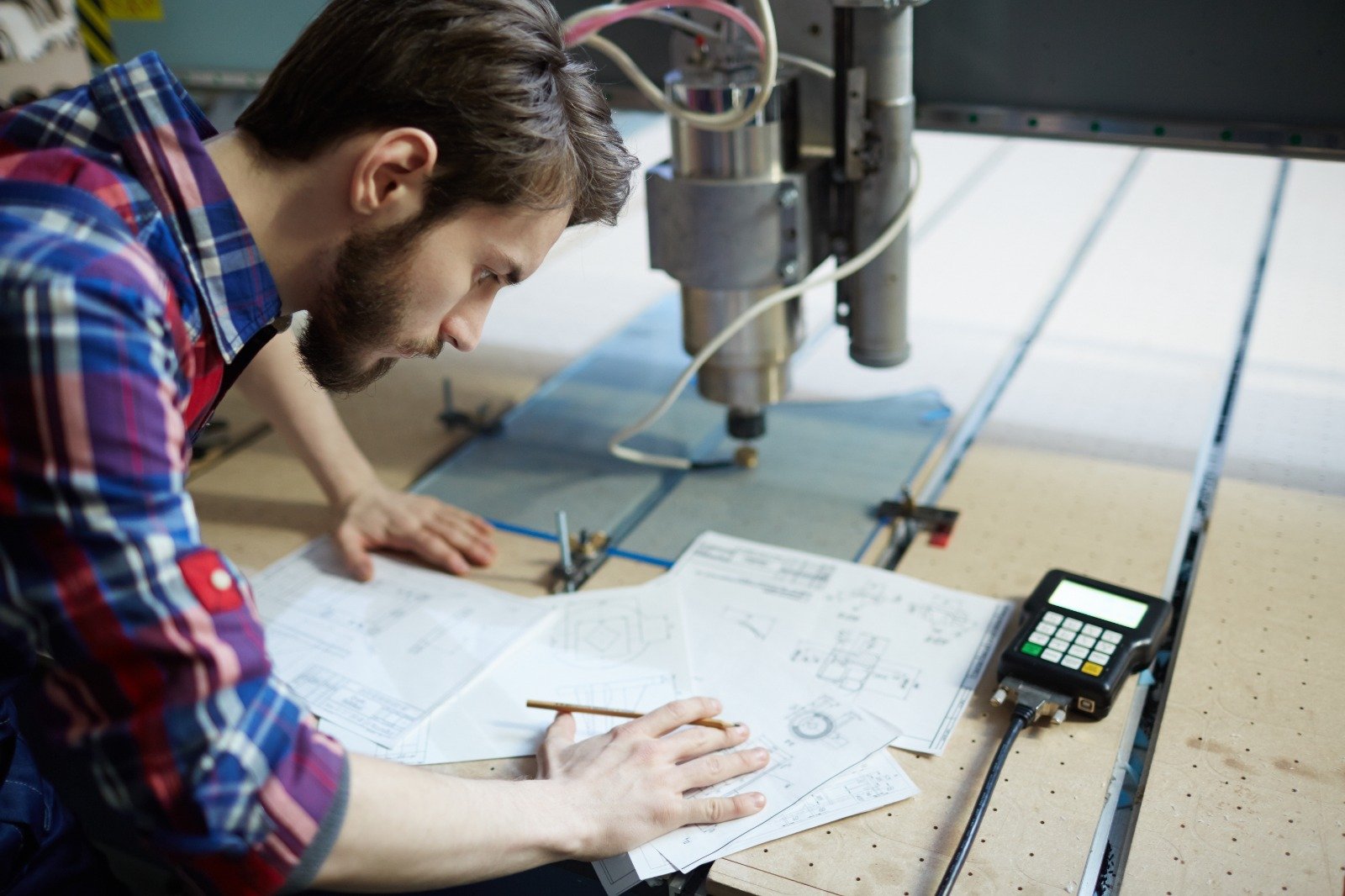How CAD Drafting is Enhancing the Fabrication Industry

Computer-aided design, or CAD, is experiencing a revolution, involving engineering and manufacturing at its core. Designing and drafting services creates accurate and detailed models and drawings of various objects and buildings using specialist software. Its potential to completely transform conventional drafting techniques while providing increased accuracy, flexibility, and efficiency makes it significant.
CAD drafting’s function in the fabrication industry
Drafting using computer-aided design (CAD) is essential to the transformation of the fabrication sector. It functions as a foundational technology that profoundly alters the way that goods are imagined, created, and produced. Numerous advantages of CAD drafting help the manufacturing industry become more innovative, precise, and efficient.
First of all, by digitizing conventional drafting techniques, CAD drafting simplifies the design process. Using CAD software, engineers and designers can produce precise and in-depth illustrations of goods, doing away with the need for manual drafting and enabling more rapid iterations and modifications. Reduced time-to-market for fabricated items is a direct result of this design phase acceleration.
Additionally, CAD drafting improves design correctness and precision. With the aid of the software, engineers can precisely design sophisticated structures and complex geometries, guaranteeing that the fabricated components adhere to the required standards and criteria. This degree of accuracy reduces mistakes and inconsistencies during the manufacturing process, which eventually results in higher-quality final goods.
The optimization of material utilization is one of the major roles that CAD drafting plays in the fabrication business. With the aid of CAD software, designers may assess their material requirements and simulate various design iterations. CAD drawing helps minimize waste and optimize resource utilization, which lowers manufacturing costs and the environmental effect of fabrication operations.
Moreover, additional freedom in design iterations is made possible by CAD drafting. Within the digital environment, design modifications may be applied quickly and effectively, allowing engineers to experiment with different design concepts and iteratively improve them. This adaptability enables creativity and innovation in product design, leading to in the creation of more innovative and useful products.
Computer-aided design (CAD) drawings are useful in the fabrication industry for a variety of reasons that boost design and production procedures. These benefits not only increase output but also push the limits of efficiency, inventiveness, and quality in the fabrication industry.
Time efficiency
Time efficiency is one of the main benefits of using CAD drafting in the fabrication process. Engineers and designers may quickly and accurately generate and alter designs in a digital environment by using CAD software. The time needed for design creation is greatly decreased by using computer-aided design (CAD) since it allows for faster iterations and modifications than traditional hand drafting techniques. This time-saving feature expedites the fabrication process overall, leading to shorter lead times and a speedier time to market for fabricated items.
CAD drafting also provides cost-effectiveness in manufacturing. CAD software assists in lowering manufacturing costs related to materials and resources by maximizing material usage and reducing waste. Fabricators can save money by identifying the most inexpensive and efficient solutions through the simulation and evaluation of design iterations. Furthermore, since CAD drafting is digital, it does not require physical prototypes, which lowers costs and expedites the production process.
Moreover, CAD drafting offers unmatched design iteration flexibility. Engineers can experiment with different design concepts and iterations without being constrained by conventional sketching processes thanks to the quick and easy implementation of design modifications in the digital environment. This adaptability encourages creativity and innovation in product design, empowering fabricators to create more creative and optimal solutions to satisfy changing market demands.
Enhancing accuracy and precision is a major benefit of CAD drafting services in the fabrication process. With the highest precision, designers may produce precise and accurate product representations thanks to CAD software. By minimizing mistakes and inconsistencies throughout the fabrication process, this degree of precision guarantees that the components are created in accordance with the intended requirements and standards. Fabricators can produce high-quality goods that meet or beyond consumer expectations by attaining increased degrees of precision.
Effects on the Assurance of Quality
In the industrial sector, CAD drafting also revolutionizes quality assurance. CAD models help engineers do thorough inspections and simulations, reducing errors and rework during the production process by offering precise and detailed representations of goods. Moreover, CAD makes it easier to adhere to rules and industry norms, guaranteeing the dependability and safety of manufactured goods.
Collaborative Processes Made possible via CAD
Collaboration amongst the several stakeholders engaged in the fabrication process is facilitated by CAD technology. Concurrent engineering approaches are made possible by the distant and simultaneous working of teams on designs through the use of CAD software. Moreover, CAD models facilitate communication by acting as a common language, which enhances comprehension and coordination between engineers, designers, and manufacturers.
Education and Talent Acquisition
The fabrication business is becoming more and more dependent on CAD, which is driving up demand for qualified CAD drafters. There are tools and training programs available to provide people the skills they need to prosper in this changing environment. Maintaining the success and further acceptance of CAD in fabrication requires closing the skills gap via instruction and training.
Obstacles and Restrictions
The fabrication sector has hurdles in adopting CAD drafting despite its many advantages. The expenditures associated with initial investments can be high, particularly for startups and small enterprises. Furthermore, in order to use CAD software and systems efficiently, a significant amount of training and resources may be needed due to their complexity. Concerns about digital data security also continue to be a problem for a lot of businesses.
Upcoming Developments in CAD and Fabrication
CAD and manufacturing both have a promising future in store. The capabilities of CAD software will be further enhanced by advancements in 3D modeling and simulation technologies, allowing for more thorough and precise design representations. CAD systems can expedite design processes and automate laborious jobs by combining with AI and machine learning. Furthermore, the creation of environmentally friendly products and processes depends heavily on computer-aided design, or CAD, and the significance of sustainable production methods is only growing.
Case Studies and Triumphant Narratives
Adoption of CAD drafting in manufacturing has yielded considerable benefits for many companies already. Construction estimating california Companies in the aerospace and automotive industries are excellent examples of how CAD technology can shorten time-to-market, enhance product quality, and expedite design processes. Applications of CAD in fabrication in the real world demonstrate its revolutionary potential and stimulate additional innovation and industry adoption.
Conclusion
To sum up, CAD drafting is transforming the fabrication sector by providing unmatched flexibility, accuracy, and efficiency in the design process. CAD technology has become essential to contemporary fabrication processes, since it facilitates workflows, improves cooperation, and ensures quality assurance. Technology’s revolutionary effects on the sector will only intensify as it develops, spurring innovation and competition. readmore





